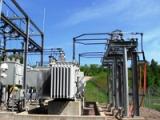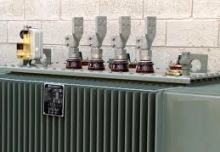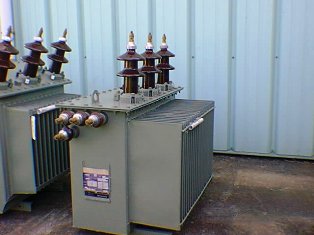Maintenance and overhaul of transformers
 During operation, individual parts of the transformer under the influence of thermal, electrodynamic, mechanical and other influences gradually lose their original properties and may become unusable.
During operation, individual parts of the transformer under the influence of thermal, electrodynamic, mechanical and other influences gradually lose their original properties and may become unusable.
In order to timely detect and eliminate development defects and prevent emergency shutdowns, current and major repairs are periodically carried out for transformers.
The ongoing repair of the transformer is carried out in the following volume:
a) external inspection and removal of discovered defects that can be repaired on site,
b) cleaning the insulators and the tank,
c) drain dirt from the expander, add oil if necessary, check the oil indicator,
d) checking the drain valve and seals,
e) inspection and cleaning of cooling devices,
f) gas shielding check,
g) checking the integrity of the exhaust pipe membrane,
h) carrying out measurements and tests.
 For transformers with load voltage regulation, emergency repairs of the regulating device are carried out in accordance with the instructions from the factory instructions, depending on the number of switching operations.
For transformers with load voltage regulation, emergency repairs of the regulating device are carried out in accordance with the instructions from the factory instructions, depending on the number of switching operations.
When repairing transformers with forced oil-water cooling, you should pay special attention to the absence of air leakage in the oil circulation system and check the tightness of the coolers.
The tightness of the coolers is checked by creating an overpressure successively from the oil and then from the water system in accordance with the present instructions.
The frequency of cleaning and testing of coolers depends on local conditions (water pollution, condition of coolers) and is performed at least once a year.
During the repair, the condition of thermosyphon filters and air dryers is also checked.
For oil-filled bushings of transformers, during repair, an oil sample is taken, oil is topped up if necessary, and the tangent of the dielectric loss angle is measured (at least once every 6 years).
Due to the fact that the oil in the transformer bushings becomes unusable after several years of operation, it is sometimes necessary to replace the bushing during repairs. Operational experience also shows that for oil-filled bushings with barrier insulation, after 10 — 12 years of operation of transformers, only changing the oil is insufficient and a major overhaul is required with disassembly, cleaning and, if necessary, replaceable insulation of bushings.
Overhaul of transformers
The transformer has sufficiently large reserves of dielectric strength of the insulation and is a very reliable device in operation.
Transformers have oil barrier insulation. The press panel is used as the main tight insulation for the transformer. The press, produced until recently by local factories, shrinks over time, which is its significant drawback.
As a rule, a rigid winding pressing system is used for transformers, which does not automatically pre-press the winding as the press shrinks. Therefore, after several years of operation, major repairs of transformers are foreseen, in which the main attention should be paid to the preliminary pressing of the windings.
In the absence of the necessary lifting devices, it is allowed to carry out overhaul with the inspection of the core in the tank (with the cover removed), if at the same time it is possible to carry out preliminary pressing and wedging of coils.
For critical transformers, the initial period of overhaul after commissioning is set at 6 years, for others, based on test results, if necessary.
The main repair of the transformer is carried out in the following scope:
a) opening the transformer, lifting the core (or movable tank) and checking it,
b) repair of the magic pipeline, coils (pre-press), switches and taps,
c) cover repair, expander, exhaust pipe (membrane integrity check), radiators, thermosyphon filter, air dryer, taps, insulators,
d) repair of cooling devices,
e) cleaning and painting the tank,
f) inspection of measuring devices, signaling and protective devices,
g) cleaning or oil change,
h) drying of the active part (if necessary),
i) installation of the transformer,
j) carrying out measurements and tests.

